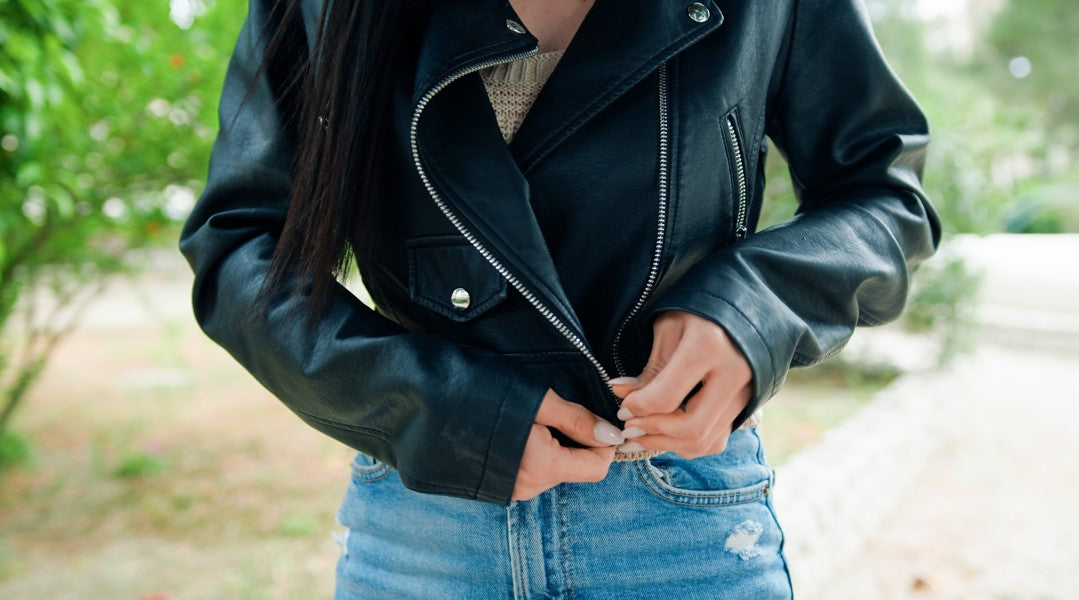
How to Distress a Leather Jacket in the USA in 2025: A Creative Guide
Leather jackets have long stood as a symbol of rebellion, edge, and timeless fashion. In 2025, this sentiment holds strong in the U.S., but there's a growing trend that’s making waves in both streetwear and high fashion circles—distressed leather jackets. While many brands sell pre-distressed pieces, nothing beats the authenticity of distressing your own jacket. It allows for a personalized touch that reflects your story, your wear, and your aesthetic. If you're in the U.S. and looking to embrace this rugged trend, this guide will walk you through the art of distressing a leather jacket—safely and creatively. Before this, explore variety of Leather Jackets in USA at Cuir Jackets here.
Why Distress Your Leather Jacket?
Before we dive into the "how," it's essential to understand the "why." Distressed leather jackets aren't just a fashion statement; they carry personality. Each scuff, wrinkle, and faded patch tells a story. In 2025, individuality is key, and Americans are shifting toward personalized fashion more than ever before. Distressing allows you to give your jacket character, making it look vintage, broken-in, and entirely your own.
Step 1: Choose the Right Jacket
Start with a genuine leather jacket, preferably made from full-grain or top-grain leather. Faux leather can crack or peel when distressed, and you may not get the rugged, aged effect you're aiming for. Opt for a jacket that’s at least a few years old or one you won’t mind transforming.
Color also matters. Lighter shades like tan, brown, or even oxblood respond well to distressing. Black jackets can be distressed too, but the effects are subtler unless paired with de-glazing or bleaching.
Step 2: Gather Your Tools
You don’t need a high-tech workshop to distress leather. Most tools can be found at home or in a local U.S. hardware or craft store. Here’s what you’ll need:
- Sandpaper (medium and fine grit)
- Wire brush or steel wool
- Leather conditioner
- Rubbing alcohol or acetone
- Sponge or soft cloth
- Hairdryer or heat gun
- Optional: leather dye or polish (for touch-ups or patina effect)
- Safety gloves and a well-ventilated workspace
Step 3: Test on a Small Area
Before distressing the whole jacket, test your technique on a hidden area—inside the hem or under the collar. Leather can react differently based on its type, finish, and color. This test ensures you won’t damage the jacket beyond repair.
Step 4: Start with Rubbing Alcohol or Acetone
Apply a small amount of rubbing alcohol or acetone to a cloth and gently rub it onto the jacket’s surface. This process removes the protective topcoat and slightly dehydrates the leather, making it more responsive to further distressing. Focus on areas that naturally wear down—elbows, shoulders, pockets, cuffs, and seams.
Pro Tip: Don’t oversaturate. Too much liquid can stiffen the leather. Let the jacket dry naturally or speed up the process with a hairdryer on low heat.
Step 5: Use Sandpaper for a Worn Look
Now comes the creative part. Use medium-grit sandpaper to gently scuff areas where natural wear would occur. You’re not trying to destroy the leather—just gently break it in. Think about how your body moves in the jacket. Sand:
- Elbows and forearms
- Back of the shoulders
- Pocket edges
- Zipper seams
- Collar and cuffs
Switch to fine-grit sandpaper for more delicate areas or to smooth over harsh marks. Sanding not only fades the color but also softens the surface, giving it that "lived-in" texture.
Step 6: Wire Brush or Steel Wool for Deeper Marks
For a more rugged and vintage effect, a wire brush can be used to create deeper scratches or mimic the appearance of aged leather. This step is entirely optional and should be done with caution. It’s great for rugged biker vibes or Western-style looks.
Don’t go overboard—too much roughness can lead to tearing. Small scratches here and there give the perfect imperfect vibe.
Step 7: Heat Application
In 2025, some artisans in the U.S. have started using controlled heat to shrink or tighten certain parts of the jacket, creating wrinkled, vintage effects. You can do this by using a heat gun or a hairdryer on high heat for short bursts.
Hold the heat source a few inches from the leather and move it around. Avoid lingering in one spot to prevent scorching. This step adds a more organic aging process, especially around cuffs and seams.
Step 8: Soften the Leather Again
Distressing can dry out your jacket. Rehydrate the leather by applying a generous amount of leather conditioner. Massage it into the jacket with a soft cloth. This step not only nourishes the leather but also darkens some of the sanded spots, creating a natural patina.
You can choose a conditioner with added dye or color, like a brown or oxblood tone, to deepen the distressed look.
Step 9: Optional Dyeing or Color Washing
Want to go further? Use diluted leather dye to brush over specific areas for a weathered or ombré effect. For example, darken the shoulders and elbows to create depth and drama. Use a sponge for even application and fade the dye into the jacket’s original tone.
Step 10: Let It Age Naturally
Now that you’ve set the stage, wear your jacket often. The more you wear it, the more it conforms to your body and your lifestyle. Walking through New York’s rainy streets, riding down California’s coast, or just heading to a concert in Austin—these real-life experiences will add subtle, unique touches that no tool can replicate.
Styling Your Distressed Jacket in 2025
In 2025, distressed jackets pair perfectly with a variety of trends sweeping across the USA:
- Techwear meets vintage: Layer your jacket over futuristic fabrics and utility pants.
- Denim revival: Go full rugged with distressed denim and boots.
- Minimalist streetwear: Let the jacket be the centerpiece over plain tees and joggers.
- Western chic: Pair with cowboy boots and flannel for a Southern flair.
Don’t forget the power of accessorizing. Vintage pins, scarves, or even custom patches can further personalize your creation.
Final Thoughts
Distressing a leather jacket in 2025 isn’t just a DIY project—it’s a form of self-expression. In an age where fashion is increasingly about uniqueness and sustainability, giving new life to an old leather jacket aligns with both style and values. Whether you're an artist in Brooklyn, a student in Seattle, or a biker in Texas, distressing your leather jacket lets your identity shine through your wardrobe.
So roll up your sleeves, gather your tools, and craft a masterpiece that ages beautifully—with you.



Leave a comment
This site is protected by hCaptcha and the hCaptcha Privacy Policy and Terms of Service apply.